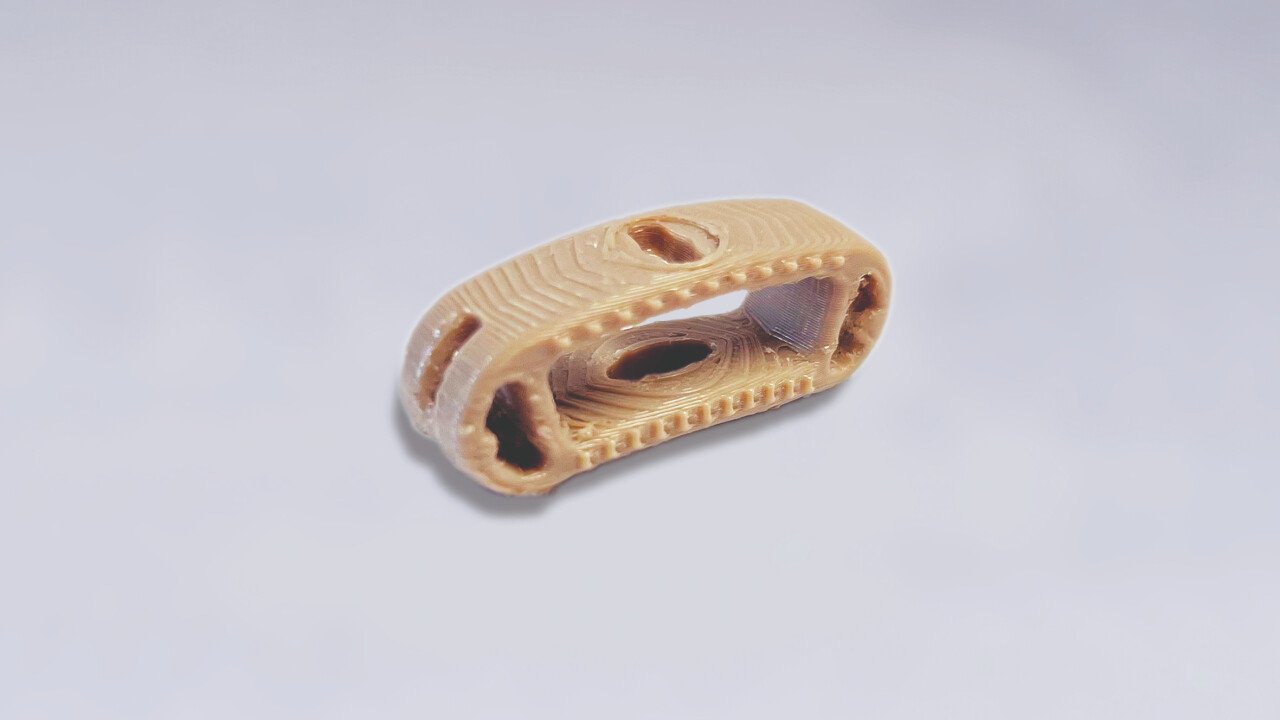High Performance Plastics: Before new medical devices or even implants can be placed on the market, they have to prove their safety and usefulness in the course of CE approval for Europe. If newly developed raw materials are used, this process usually takes much longer.
With Vestakeep Fusion, Evonik Industries AG, Essen, has developed a new product line of the next generation of peek-based implant materials. They have osteoconductive properties that cause bone cells to adhere more quickly to the implant used. In this way, the interface fusion, the so-called osteointegration, between the bone and the implant is positively influenced.
As part of a collaboration between Evonik and Samaplast AG, St. Margrehen, the special processing properties and design diversity of the new high-performance plastic were demonstrated using the first cage prototypes of spinal implants.
Due to the existing basic approval of Vestakeep Fusion, it can be assumed in a specific application that the end product will meet the necessary specifications for CE approval. However, medical technology requires proof of this, for example a biocompatibility study on the end product or on comparable samples. But how can product development and approval procedures be accelerated without leaving the legal framework?
The solution is a parallel development with the use of supplementary manufacturing processes such as additive manufacturing (AM), rapid tooling or injection molding. Depending on the development phase, these processes can be used to produce the corresponding comparable samples from the original material.
This allows the corresponding tests to be carried out in order to provide the necessary evidence. This approach not only helps to get to market faster and more cheaply, it also minimizes the risk and thus increases the success of the project.
Comparative samples for various tests are created in the clean room
The decisive factor for the use of supplementary processes in parallel development is that all manufacturing techniques take place in a regulated and qualified or validated environment. In conventional processes, this is EN ISO 13485. In additive manufacturing, this is represented by certification in accordance with ISO/ASTM 52920 (formerly DIN SPEC 17071). Samaplast is certified according to both standards and has linked the internal processes in such a way that the parallel sequence of the AM and injection molding processes is possible.
It is also crucial that the same starting material is used in the individual processes. The use of an Arburg Freeformer in combination with the injection molding process makes this possible. During the development of the cage implants with Vestakeep Fusion, samples comparable to the series parts could be created very early on under controlled clean room conditions in additive manufacturing. These can be used, for example, for design and handling clarifications, washing and packaging tests as well as for laser marking tests.
If you combine the AM process with rapid tooling tools, larger quantities of 100 to 1000 pieces can also be produced using the injection molding process with original material and hardened steel inserts. These are suitable for further tests and can thus provide evidence for the technical file. This includes cleaning validations, sterilization validations, biocompatibility tests and clinical studies. The Rapid Tooling concept from Samaplast offers the possibility of producing small series from prototype tools made of hardened steel tools in ten days.
Finally, once the injection mold has been manufactured and the necessary process validations have been completed, the medical device can be CE-certified and approved for the market. With the traditional approach, you would only start with the necessary tests now, which would lead to massive loss of time and increased costs.
